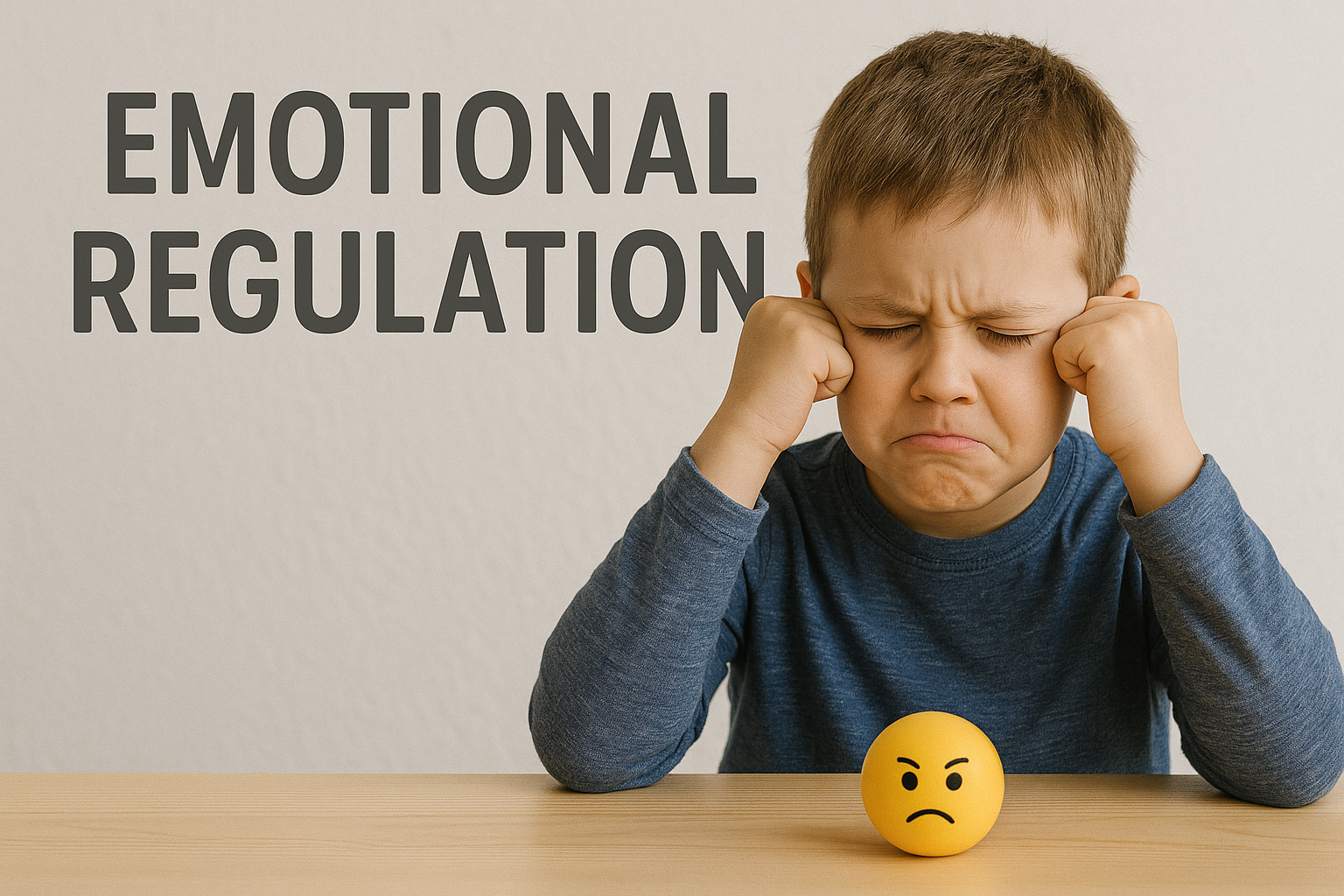Supporting Emotional Regulation: A Key Role for Pediatric Occupational Therapy
Emotional regulation — the ability to understand, manage, and respond to emotions appropriately — is central to children’s success in school, in relationships, and in day‑to‑day tasks. Many children struggle with regulation due to sensory, developmental, or neurological factors. Pediatric occupational therapists play a vital role in helping children build these skills. In this post, we’ll explain what emotional regulation is, how difficulties show up, and effective OT‑led strategies to support kids.
1. What Is Emotional Regulation?
- Emotional regulation is the process by which individuals influence which emotions they have, when they have them, and how they experience or express those emotions.
- This includes recognizing emotions, adjusting intensity, coping strategies, and returning to baseline after emotional arousal.
- For children, it develops gradually through interaction, self-awareness, and brain maturation.
2. Signs of Regulation Challenges in Children
Children struggling with emotional regulation may exhibit:
- Frequent emotional outbursts, tantrums, or meltdowns
- Prolonged recovery time after frustration or upset
- Overreactions to minor stressors
- Difficulty calming down or self-soothing
- Impaired focus or task avoidance after emotional triggers
- Anxiety, withdrawal, or emotional shutdown
- Inconsistent behavior depending on the environment or stress level
3. Why OT Is Involved in Emotional Regulation
- Regulation impacts a child’s ability to engage in daily occupations — learning, play, self-care.
- Emotion and sensory systems are intertwined: dysregulated sensory processing often contributes to emotional dysregulation.
- OT uses a “just-right challenge” model to build adaptive coping in safe, scaffolded environments.
- Therapists embed regulation strategies into functional tasks, making them more natural and transferable.
4. OT Strategies for Supporting Emotional Regulation
1. Build Self‑Awareness & Emotional Vocabulary
- Use visual tools (feelings charts, emotion thermometers) to help children name and understand emotions.
- Reinforce recognition of internal states through stories, mirrors, or role-play.
2. Practice Co-regulation & Model Strategies
- Provide calm presence, tone modulation, and support breathing during escalation.
- Model recovery, calming, and re-engagement behaviors consistently.
3. Incorporate Sensory-Based Tools
- Offer deep pressure, weighted objects, movement breaks, or tactile input tailored to calming vs activating needs.
- Create accessible “sensory toolkits” for different settings.
4. Teach Breathing, Mindfulness & Grounding Techniques
- Use strategies like belly breathing, square breathing, or guided imagery.
- Implement grounding techniques and body scans to increase interoception.
5. Create Emotion Regulation Routines
- Use structured schedules, visual cues, and transition tools to reduce uncertainty.
- Embed regulation strategies into daily routines and transitions.
6. Practice Coping Through Gradual Exposure
- Simulate manageable stress and guide children in using coping skills.
- Use scaffolding to build emotional tolerance before reducing supports.
7. Collaborate Across Environments
- Work with caregivers and teachers to reinforce regulation tools.
- Set up calming areas, use signal cards, and promote consistency in response.
5. Measuring Progress & Outcomes
Track changes in emotional regulation through:
- Frequency and duration of meltdowns
- Time taken to return to baseline after upset
- Child’s ability to recognize and express emotions
- Parent and teacher reports of improved behavior
- Task participation without emotional shutdown
- Generalization of strategies across settings
Conclusion
Emotional regulation is a foundational skill for children’s success in academics, relationships, and daily life. Pediatric occupational therapy approaches regulation through a blend of awareness, sensory tools, co-regulation, and structured practice — always personalized to the child’s needs. With consistent support and skill-building, children can learn to navigate and express emotions more adaptively.

